One of the things I love most about Southland is its sheer size. Everything about it is so grand, from its majestic mountains to the wide-open plains, sweeping surf beaches, and otherworldly lakes.
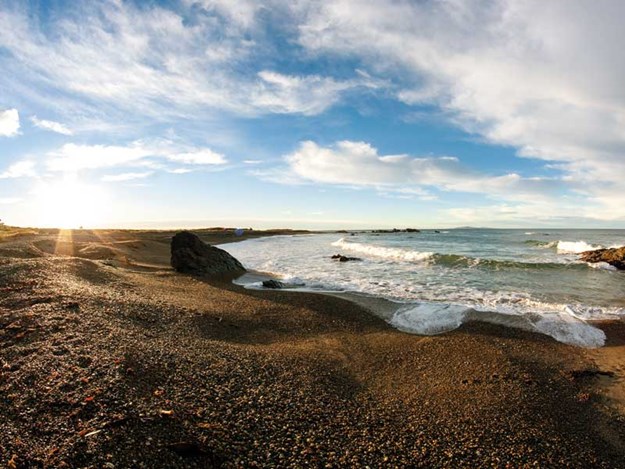 |
The beautiful coastline of Riverton |
There’s just so much to do and see. Another great thing about the area is you can cram a huge amount into one day, with so many great places being just a short drive away from one another.
Of course, you can also take as long as you like and enjoy the area at your leisure. Southland is, after all, home to some of the most popular and best-loved camping spots. While we didn’t have the luxury of time, we felt like a day out in uncharted territory to blow out the post-winter cobwebs and knew just where to go—Western Southland on the Southern Scenic Route.
The Southern Riviera
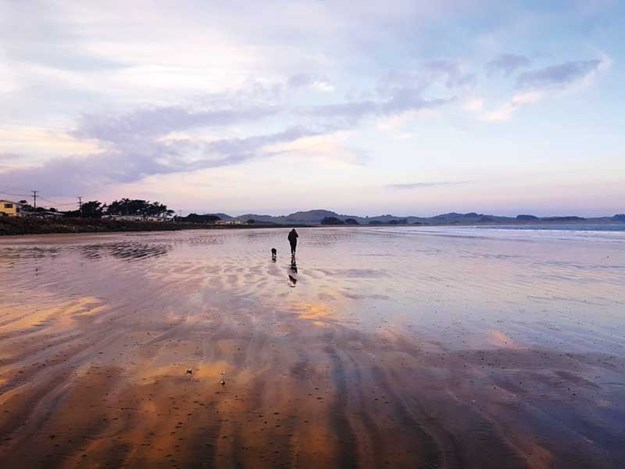 |
Colac Bay |
I had heard so many names from this region bandied about by other motorhomers, such as Colac Bay, Cosy Nook, Nightcaps, and Monkey Island. Such whimsical names had always piqued my curiosity, but more than that, they were regaled by Kiwis and overseas tourists alike as being excellent places to camp.
Indeed, in the case of Nightcaps and Monkey Island, visitors could stay for up to 28 days and often did. I was keen to go and see what all the fuss was about. We turned off the main highway to Invercargill and passed through Wallacetown and Lorneville before meandering over the bridge to Riverton.
Known as the Riviera of the South, Riverton is a town steeped in history and is one of the earliest European settlements in the country.
Just 10 minutes down the road, we arrived at Colac Bay and I could instantly see the appeal. Driving past the giant surfer statue into the little coastal retreat brought back many memories of seaside holidays of years gone by, and I loved all the character buildings and murals, in particular, the brightly painted school bus stop.
Self-contained vehicles can stay here for two nights in the free camping area on the far side of the boat ramp overlooking the beach. The renowned surf beach stretches for miles and looks directly across the Foveaux Strait to Stewart Island.
Apparently, one simply does not visit Colac Bay without getting fish and chips, but with many places still to visit, we had to keep moving.
Hidden gems
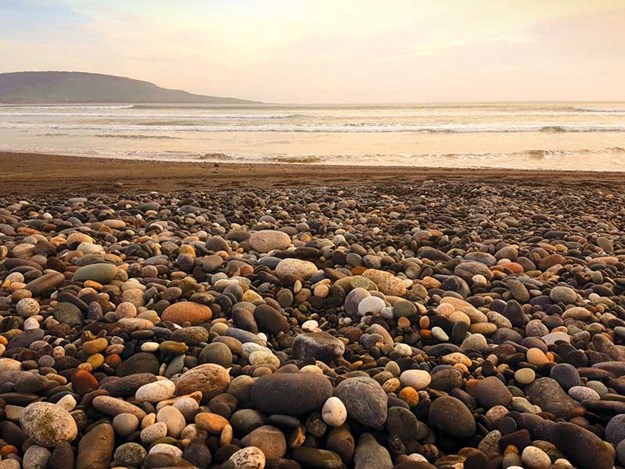 |
It’s true what they say about Gemstone Beach |
An enthusiastic beachcomber of many years, I had been told that you could find gemstones right on the beach. Even so, I had remained sceptical until I saw it for myself.
Sure enough, you can find all manner of beautiful semi-precious stones, such as quartz, jasper, garnet, and nephrite polished naturally by Mother Nature.
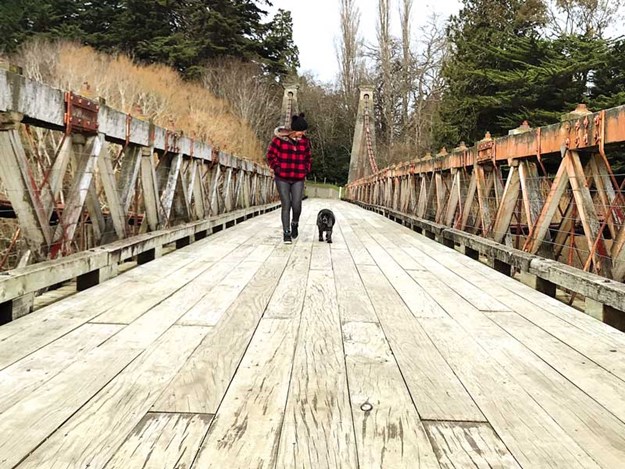 |
Minnie and I enjoy a walk on the Clifden Suspension Bridge |
Next, we headed to the Clifden Suspension Bridge further along the road. This historic structure was built in 1899, and, given my fear of both heights and suspension bridges, I didn’t plan to set foot on it.
However, I was pleasantly surprised at the workmanship of this old relic and we took a stroll both on the bridge and around the reserve. It’s definitely worth the stop. Bring a picnic and stay a while.
Monkeying about
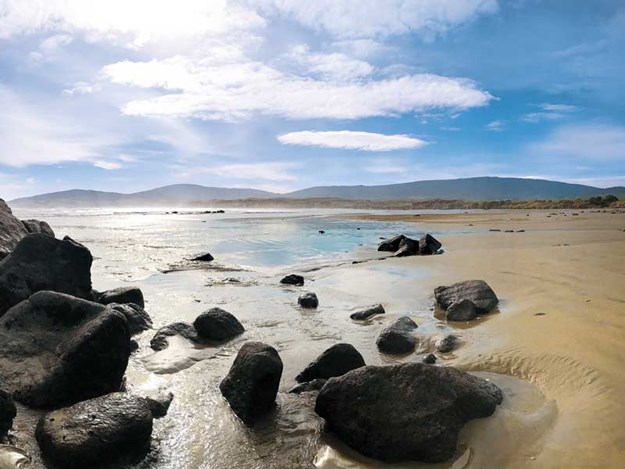 |
Monkey Island beach |
To date, I had heard only two things about Monkey Island: one, that it was full to capacity with campers every night during the tourist season, and two, that it is incredibly windy and exposed all year round.
While we wouldn’t be staying, we were keen to check out this freedom camping Mecca. As we parked up at the edge of the beach and looked out at the little island a short way out to sea, I could understand its popularity. The beach is stunning.
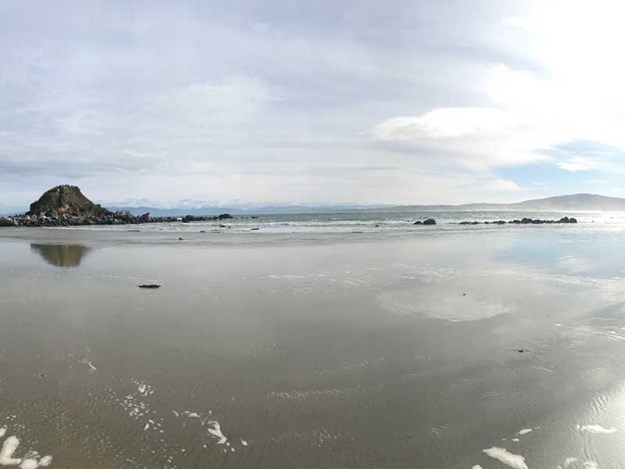 |
It’s not hard to see why Monkey Island is so popular |
Monkey Island got its name from the fact you can climb up it, which many people do. There is a staircase leading up to the top, which is accessible at low tide. While the tide was in too far for us to explore, it didn’t matter much, as the view in itself was enough, with the ocean in the foreground and the snowy mountains behind.
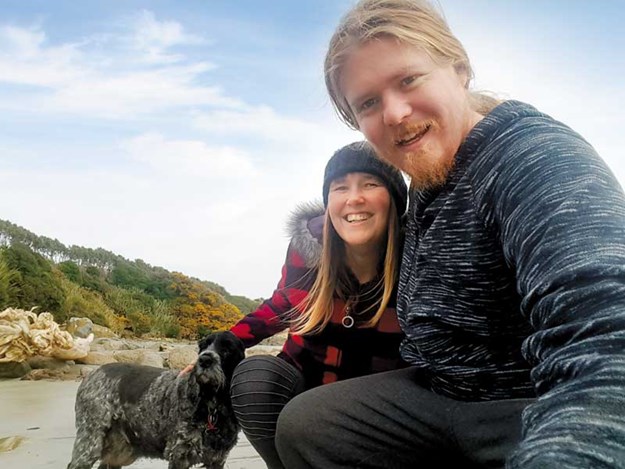 |
Nobody at Monkey Island but us! |
We were the only ones there to see this gorgeous spot in all its glory before the hordes would soon descend for the summer months.
Lake Monowai
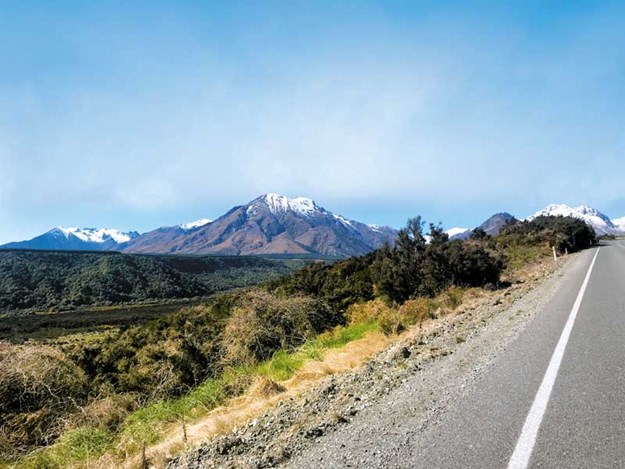 |
The scenic drive to Tuatapere |
We continued through the thriving rural town of Tuatapere before turning off down kilometres of gravel road to Lake Monowai. In summer, this southern gateway to Fiordland is bustling with campers, but on the day of our visit, we only spotted a few fishermen.
A tramper’s paradise, there are several walks in the area, from a 30-minute nature ramble to Lake Monowai lookout, Borland Saddle, and full-day hikes to Green Lake and Monowai Huts.
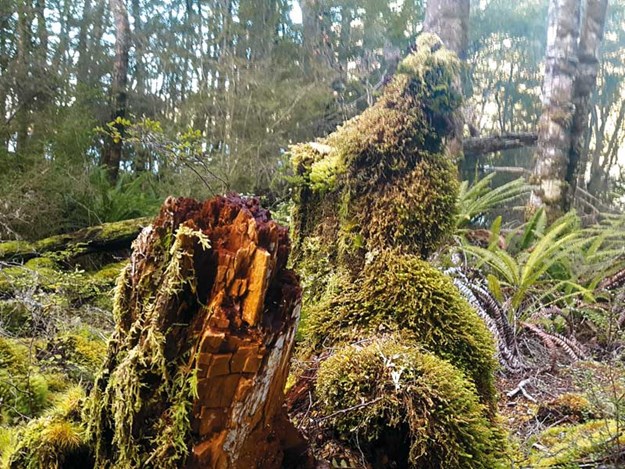 |
Lake Monowai forest walk |
The forest walk, which begins next to the boat ramp, is out of this world. For us, it held all the beauty of some of the more popular walks en route to Milford Sound without the crowds.
The well-maintained track winds through mature beech trees and brings you out at the edge of the lake. The view is breathtaking and so peaceful that all we could hear was the gentle ripple of the water. One piece of advice though: wear plenty of insect repellent.
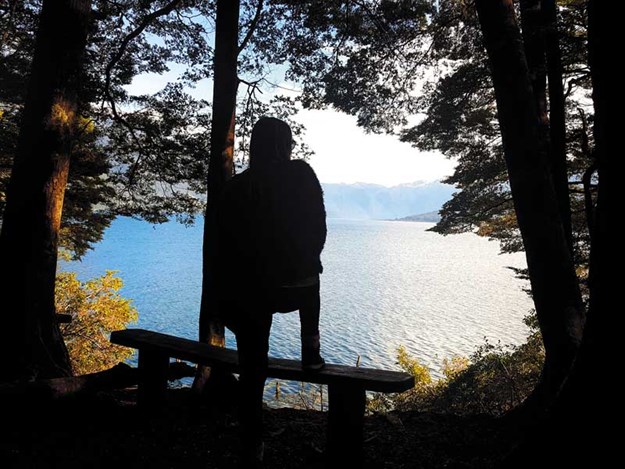 |
The peaceful Lake Monowai lookout |
We had crammed all we could of Western Southland into one incredible day and it was time to head home. We may have run out of time for now, but with Cosy Nook, Nightcaps, and the Hump Ridge Track still to explore, there’s only one thing for it. We’ll just have to go back again.
Things to do in Western Southland
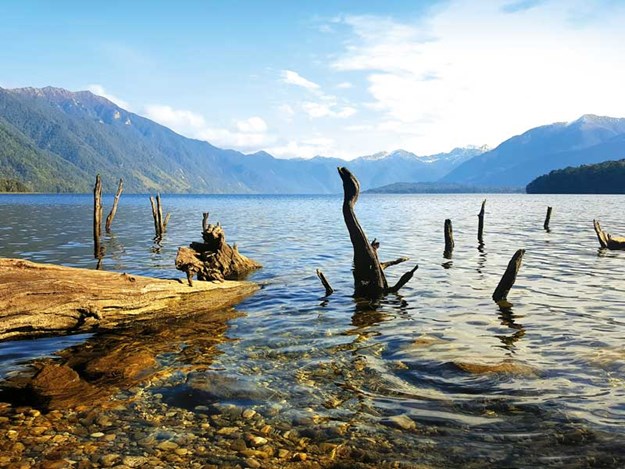 |
Lake Monowai |
Western Southland is a special corner of the world, tucked between the towering peaks of Fiordland, the Takitimu mountains, and the Southern Ocean. Here are a few more facts you may not know about the area.
- The Southern Scenic Route was originally conceived by the people of Tuatapere, who in 1985 decided to share the delights of the area with all who took the time to venture down their way. As if that wasn’t enough, the community also went on to create and develop the Hump Ridge Track—a three-day loop walk that takes hikers along the south coast, up to the sub-alpine zone of Hump Ridge and over historic viaducts in the heart of native forests. For more information on the various walks available, visit humpridgetrack.co.nz.
- The Clifden Caves are an unexpected delight and are free to explore. All you need is a torch, decent footwear, and a bit of bravery. The cave takes around an hour to explore. Make sure you let others know of your plans before visiting, as there is no phone reception in the area.
- Lake Monowai was one of the first New Zealand lakes to be harnessed for hydro-electric power production. Opened in 1925, the hydro-electric station is located at the junction of the Waiau and Monowai Rivers.
- Where did Nightcaps get its unusual name from? The weather! From the main street, looking towards the Taikitimu mountains, you can see two distinctive peaks. Upon seeing the tops covered with snow, early settlers said it looked as though the mountains had their nightcaps on. The name stuck and there is no other town in the world with the same name.





